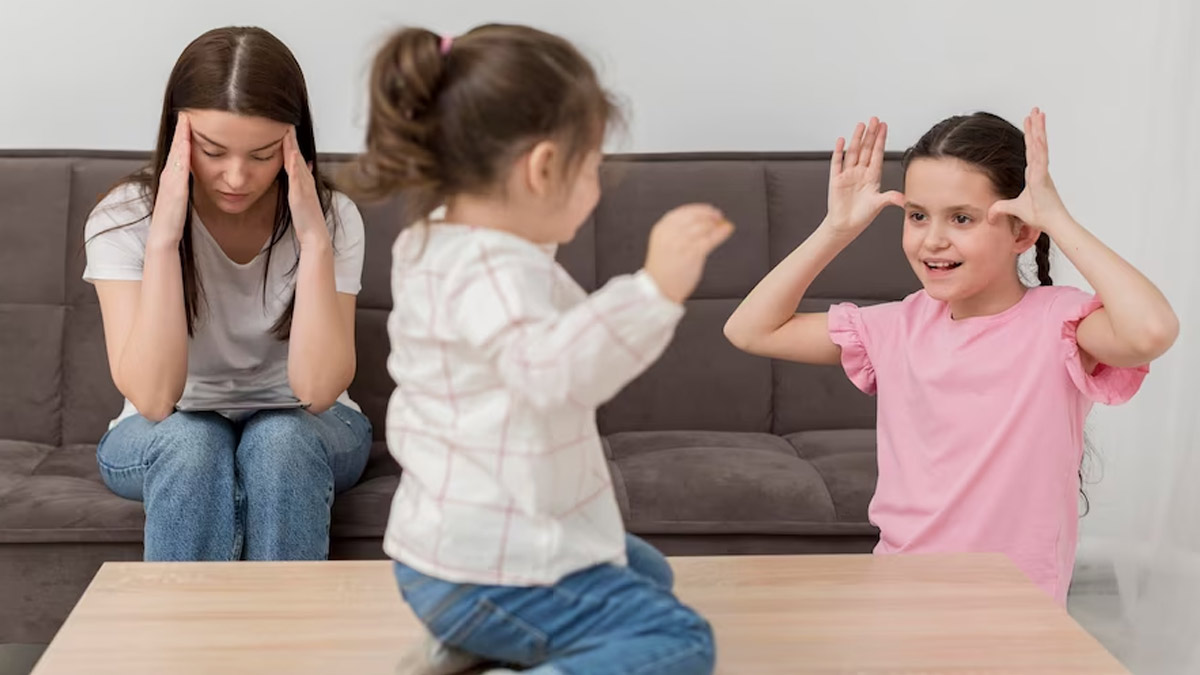
One of the most challenging things for any parent is to understand their child's behaviour. Although occasional tantrums, disobedience, and mood swings are a normal part of growing up, the persistence of changes in emotional or behavioural patterns may be indicative of something deeper.
Table of Content:-
According to Zalak Nandu, Psychologist at Mpower, Aditya Birla Education Trust, Thane, it becomes necessary for early support and healthy development to know the difference between naughty behaviour and signs of emotional distress. Here is everything she shared with us.
Many parents instinctively label difficult behaviour as stubbornness or attention-seeking. But emotional distress usually manifests subtly and in ways that could easily be misinterpreted as mere misbehaviour. "Children don't always have the words to say how they are feeling inside. So these feelings emerge as behaviours. To understand the difference, one has to observe a pattern, what triggers it, and the background of why the child would respond in this way,” Zalak explained.
Also Read: Beat the Bloat: Simple Daily Habits That Reset and Strengthen Your Gut

What Counts as Normal Misbehaviour in Children?
Children in every age group can exhibit behaviours like throwing tantrums, not listening, talking back, and even hitting occasionally. Most of these come from needs not being satisfied-hunger, tiredness, overstimulation, or a need to be independent. Normal misbehaviour is typically circumstantial, brief, and usually disappears when the underlying need is satisfied.
Stating an example, Zalak shared, a toddler might cry when it's time to stop screen time, or a school-aged child might argue when it's homework time. These are developmentally normal responses. "Normal misbehaviour shows improvement when boundaries are set consistently," said Nandu. A child who calms down after a few minutes or responds positively to redirection is likely asserting independence rather than signalling emotional distress.
Signs of Emotional Distress in Children
Emotional responses become a cause for concern when behaviours are repetitive, intense, or disproportionate to a situation. Zalak pointed out to watch out for the following signs:
- Sudden behavioural changes, such as withdrawal, increasing irritability, or outbreaks of aggression
- Disrupted routines, including sleep disturbances, nightmares, loss of appetite, or overeating
- Loss of interest in activities previously enjoyed
- Decreased performance in academics or avoidance of school
- Physical complaints, such as stomach aches or headaches, that have no medical cause
- Separation anxiety or too much clinginess
- Self-blame, negative self-talk, or feelings of hopelessness
According to Zalak, these acts often signify underlying emotional problems such as anxiety, being bullied, grief, conflicts within the family, or learning difficulties. “If a child consistently reacts with fear, anger, or sadness to everyday situations, it is very important to look beyond behaviour and explore what feelings drive behaviour,” she added.
Recognising Patterns and Triggers of Emotional Distress in Children
A helpful way to differentiate between misbehaviour and distress is to keep a log of when and where the behaviour happens. For example, does it happen at school, at home, or with anyone in particular? Does it follow major life changes such as a move, illness, or parental conflicts? “Patterns may reveal emotional triggers that the child is struggling to express,” Zalak shared.
Also Read: Expert Shares How Weekend Habits Quietly Impact Sperm Quality

Importance of Communication with Children
Children often express their needs when they are given a safe space. Instead of punishment, Zalak recommended open conversations. These may include:
- Ask gentle questions like, "I noticed you seem upset lately. Do you want to talk about it?"
- Acknowledge feelings rather than labelling behaviour as bad.
- Use age-appropriate language and encourage them to describe what they're experiencing.
This helps kids feel understood, which may diminish the emotional intensity and naturally improve their behaviour.
Bottomline
Not all challenging behaviour is misbehaviour; sometimes, it's a child's silent scream for help. Knowing the difference provides parents with the opportunity to be empathetic and intervene at an appropriate time.
Also watch this video
FAQ
1. How do I know whether my child's tantrums are normal or a distress signal?
Normal tantrums are those that are occasional, situational, and decrease with consistent boundaries; persistent, intense, or inexplicable tantrums may be a sign of emotional distress.2. Can emotional disturbances in childhood manifest as physical complaints?
Yes, headaches, stomach aches, fatigue, or changes in appetite for no apparent medical reasons may signal emotional strain.3. When should I seek professional help for my child's behaviour?
If it persists for weeks or interferes with daily life, or if anxiety, withdrawal, or self-injury is suspected, consult a child psychologist.
How we keep this article up to date:
We work with experts and keep a close eye on the latest in health and wellness. Whenever there is a new research or helpful information, we update our articles with accurate and useful advice.
Current Version
Nov 17, 2025 14:41 IST
Published By : Tanya Srivastava